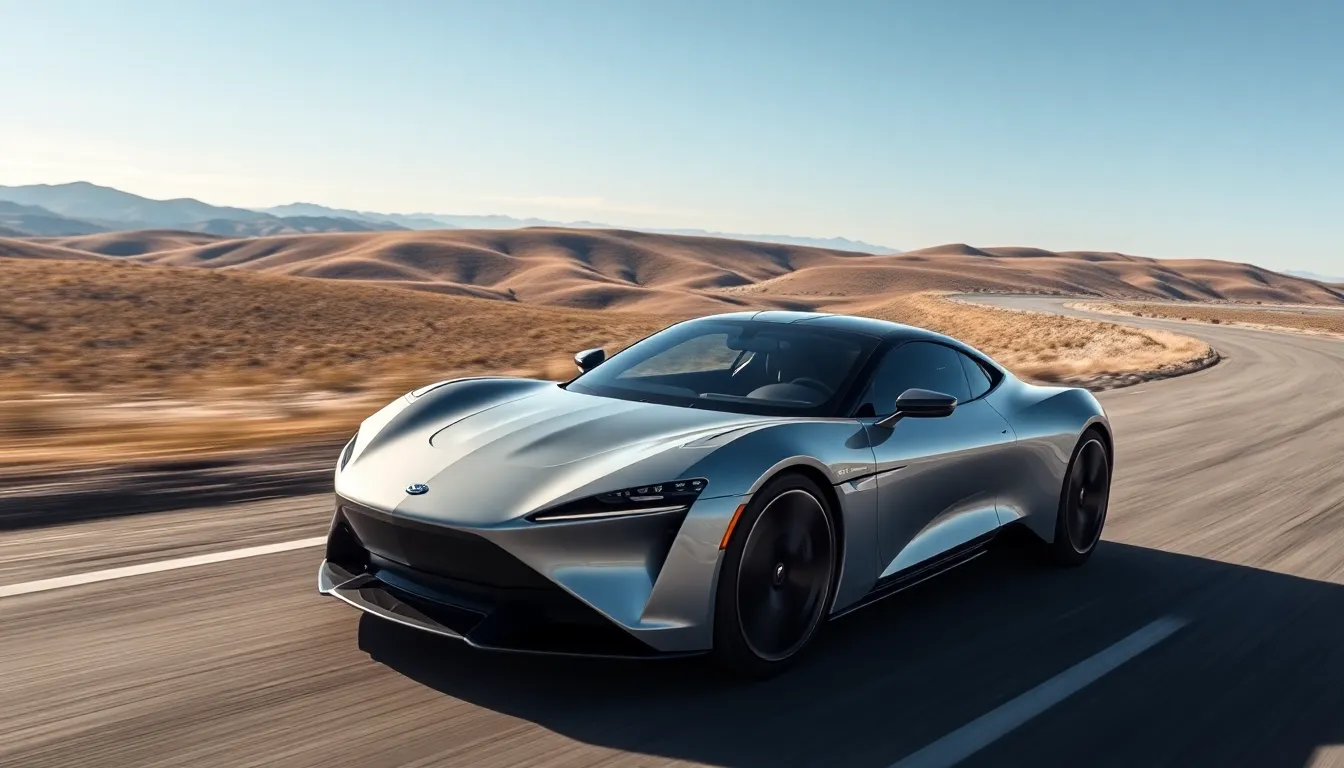In a world where smartphones are practically an extension of our hands and smart fridges can remind us to buy milk, consumer tech is no longer just a luxury—it’s a necessity. It’s the magical realm where gadgets promise to make life easier, more fun, and occasionally, a little too complicated. Who knew that ordering a pizza could involve three different apps and a voice assistant that can’t quite understand your craving for extra cheese?
Table of Contents
ToggleOverview Of Consumer Tech
Consumer technology encompasses a wide range of electronic devices designed for personal use. Smartphones stand at the forefront, enabling communication, multimedia consumption, and various applications that simplify daily tasks. Smart home devices, such as smart thermostat systems, enhance energy efficiency and provide comfort.
Wearable technology plays a crucial role in monitoring health metrics, including heart rate and sleep patterns. Fitness trackers and smartwatches illustrate the growing trend of integrating technology into health management. Smart appliances also contribute by automating mundane household tasks, allowing for more efficient living.
Internet connectivity drives the advancement of consumer tech. High-speed connections facilitate the functionality of these devices, enabling seamless integration into lifestyles. Numerous services like cloud storage and streaming platforms rely on robust connectivity to deliver content effectively.
Innovation in consumer tech continues to advance rapidly. Companies constantly release updated models that incorporate the latest technological developments. Features like artificial intelligence and machine learning enhance user experience by personalizing interactions and improving efficiency.
Security remains a top concern, with data protection becoming paramount. Manufacturers implement measures to safeguard user information, reflecting the importance of privacy in consumer tech applications. Regular software updates and enhanced encryption methods establish a foundation for secure usage.
Emerging technologies such as 5G networks are set to transform consumer tech. Faster speeds and lower latency will redefine how devices communicate and operate. As the consumer tech landscape evolves, users can expect an increasingly interconnected environment that prioritizes convenience and functionality.
Emerging Trends In Consumer Tech

Consumer technology continues to evolve rapidly, influencing everyday life and enhancing user experiences. Innovations emerge regularly, shaping how individuals interact with devices.
Innovations Shaping The Future
Sustainability drives new eco-friendly products designed for consumer tech. Smart devices increasingly incorporate renewable materials to meet environmental standards. Companies focus on creating modular designs that facilitate repair and upgrade options, fostering a circular economy. 3D printing gains traction, allowing for custom solutions tailored to user needs. Additionally, augmented reality introduces immersive experiences across various sectors, including gaming and retail. Enhanced voice recognition technology simplifies user interaction, making devices even more accessible.
Impact Of AI And Machine Learning
Artificial intelligence transforms consumer tech by personalizing user experiences. Predictive analytics enable devices to learn individual preferences, recommending content based on past behavior. Machine learning algorithms improve performance, allowing devices to operate more efficiently. Smart home assistants employ AI to manage daily tasks and integrate seamlessly with other connected devices. Security features also benefit, utilizing machine learning to detect anomalies and safeguard user data. The collaboration between AI and consumer tech enriches daily life, streamlining routines and enhancing convenience.
Popular Consumer Tech Devices
Consumer tech devices encompass a variety of gadgets that enhance daily routines and improve convenience. The following sections highlight key categories within this space.
Smartphones And Tablets
Smartphones lead the consumer tech landscape, serving as primary communication tools. They facilitate quick access to information and entertainment, thanks to apps for everything from streaming to social media. Tablets complement smartphones by offering larger screens for reading and productivity. These devices often feature high-resolution displays and powerful processors, catering to multimedia consumption and gaming. The global smartphone market, as of 2023, is valued at approximately $448 billion, illustrating their significant role in daily life. Tablets hold a market share of around $40 billion, highlighting their importance for both casual and professional use.
Smart Home Devices
Smart home devices revolutionize the way individuals interact with their living spaces. These gadgets range from smart thermostats to security cameras, promoting energy efficiency and safety. Smart speakers act as central hubs, managing other devices via voice commands. The smart home market reached $79 billion in 2023, reflecting a growing trend toward automation and remote access. Integration with mobile apps provides convenience by enabling users to control home environments from anywhere. Wireless connectivity remains essential for seamless operation, connecting various devices to a centralized system, and creating an interconnected home ecosystem.
User Experience And Accessibility
User experience in consumer tech focuses on how effectively devices meet user needs. Companies prioritize intuitive designs, ensuring that even non-technical users find products easy to navigate. Accessibility features play a crucial role, providing options for individuals with diverse abilities.
Smart home devices, such as voice assistants, enhance accessibility significantly. Users can control their environments effortlessly through voice commands, reducing physical barriers. Similarly, software updates often introduce new accessibility features, adapting to evolving user expectations.
Wearable technology promotes user experience by combining function with style. Many smartwatches now offer health-tracking capabilities alongside alerts for notifications, ensuring users manage tasks efficiently. Notifications come directly to the wrist, providing instant communication without needing to reach for a phone.
Data indicates that nearly 20% of the U.S. population has some form of disability. Creating tech with these users in mind expands market reach and enhances overall consumer satisfaction. Companies that emphasize accessibility can tap into this substantial demographic, providing tailored solutions.
Artificial intelligence contributes to personalized user experiences in shaping accessibility features. Devices analyze user behavior to suggest activities or adjustments that improve usability. This adaptability means devices can evolve based on individual preferences and requirements.
The thriving market for consumer tech indicates that enhancing user experience and accessibility fosters innovation. Globally, smart home devices alone are valued at $79 billion in 2023, reflecting growing consumer interest in products that promote convenience, security, and inclusivity. User-centered design remains essential, as technology continues to integrate into everyday life seamlessly.
Future Prospects For Consumer Tech
Consumer tech shows significant promise, particularly with advancements in 5G networks. Faster speeds and lower latency enhance device connectivity, revolutionizing how users interact with technology. Smart home ecosystems will become even more integrated, streamlining day-to-day tasks.
Sustainability continues to drive product innovation, creating eco-friendly devices and modular designs that allow for repairs and upgrades. Increased emphasis on reducing electronic waste influences manufacturers to adopt circular economy principles.
AI and machine learning will integrate further into everyday gadgets, providing personalized experiences that adapt to user preferences. Future devices will utilize predictive analytics to optimize performance and functionality. The upcoming generation of wearables may include more health monitoring capabilities, responding to the growing focus on personal wellness.
Voice recognition technology makes devices more accessible, allowing users to control their environments easily. This opens avenues for increased inclusivity in consumer tech. Nearly 20% of the U.S. population possesses some form of disability, highlighting the demand for tech that caters to diverse needs.
Expansion in the smart home market indicates rising consumer interest, with smart speaker hubs becoming central to home automation. The estimated market value of smart home devices at $79 billion underscores their importance in enhancing convenience and energy efficiency.
As companies continuously innovate, emerging trends will shape the future of consumer technology. Enhanced user experience will drive the development of intuitive interfaces that appeal to both tech-savvy and casual users. Overall, consumer tech’s trajectory points toward a landscape rich in connectivity, sustainability, and inclusivity.
Consumer tech is undeniably shaping the future of daily life. As innovation continues to drive advancements in connectivity and functionality, users can expect even greater convenience and personalization. The growing emphasis on sustainability and accessibility ensures that emerging technologies will cater to diverse needs while minimizing environmental impact.
With the integration of AI and machine learning, devices are becoming smarter and more intuitive, enhancing user experiences across the board. The expansion of the smart home market signals a shift towards interconnected living spaces, where convenience and efficiency reign supreme. As consumer tech evolves, it will undoubtedly remain a pivotal aspect of modern existence, enriching lives and transforming how individuals interact with their environments.





